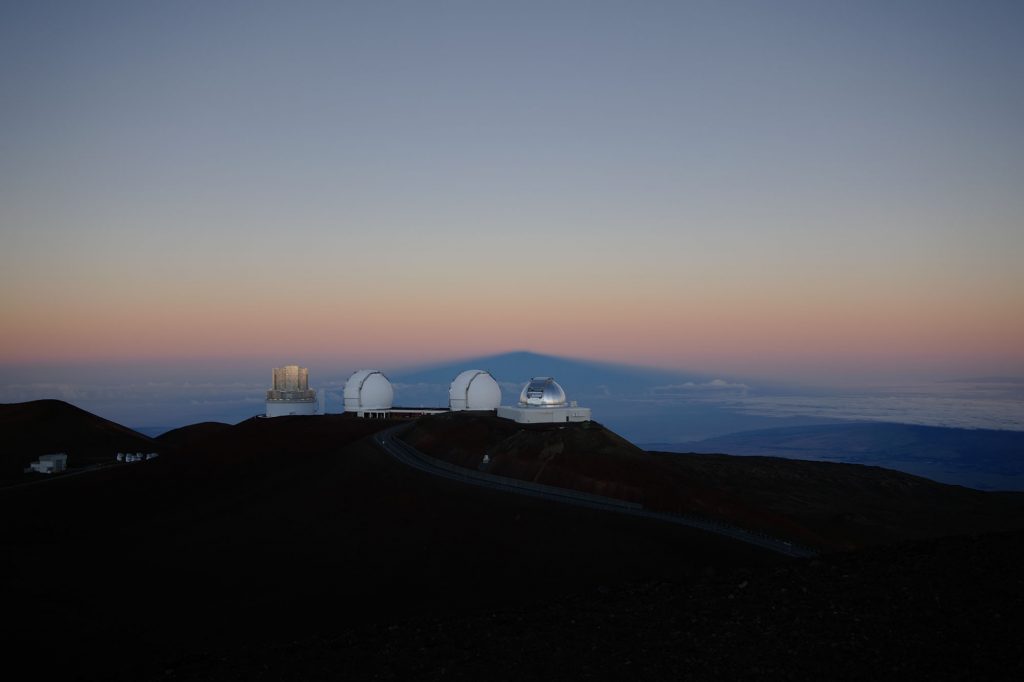Miami Art Week 2019: From Western Europe to the Pacific Islands with Artist Zac Langdon-Pole
The BMW Art Journey recipient on celestial navigation, time and space

From peering through telescopes on Hawaii’s Mauna Kea summit at sunrise to manipulating tiny samples of sand from Majuro Atoll in the Marshall Islands, multi-disciplinary artist Zac Langdon-Pole‘s recent travels have revealed countless treasures pertaining to space, science, history, nature, migration and even religion. With celestial-mapping as his starting point for storytelling, Langdon-Pole ventured out as the recipient of the 2019 BMW Art Journey—an initiative that the brand created to support artists and provide them with the opportunity to travel in the spirit of discovery and inspiration. The recipient is chosen by an independent board of curators and advisors, and the endeavor has little to no parameters: just that the trip must be at least two weeks long. We spoke with Langdon-Pole during Miami Art Week, at Art Basel, where some of his work from the journey is on show—but the information and inspiration he gleaned over his travels stretch far beyond the art fair.

Somewhere between history, science and magic lies the essence of Langdon-Pole’s Sutures of the Sky journey. He says, “The different ways that cultures have engaged with the stars is infinite.” He mapped his own trip across the planet with the intention of exploring how people from Western Europe to the Pacific Islands looked (and look) to the cosmos—and the ways in which those approaches relate. He traveled from his base in Berlin to the UK, the Netherlands, France, Hawaii, Samoa, the Marshall Islands and to his homeland New Zealand.

His proposal was extremely detailed and well-researched, but the journey resulted in many surprises—one in particular occurred in Lascaux, in Montignac, in the south of France. Langdon-Pole traveled there to see 20,000-year-old cave paintings. “I had read a scholarly paper about the fact that there’s this painting of a bull with dots, and the dots are believed to be the Pleiades, the seven sisters,” he tells us. “So this must be some of the earliest representations of the stars in human history, right? 20,000 years, that’s sublime. Why don’t I go there and learn about that? So I went.” While the public can’t enter the real caves (as they’re protected), there have been accurate and detailed replicas made. “It’s beautifully done, they have really recreated these things. I asked this guy who worked there, ‘Wow, what about these stars?’ and he said, ‘Oh, we don’t know if they are stars.’ But that was beautiful in itself: a whole museum made for something that we don’t fully understand.”

It’s this search for something intangible and to continue learning that fueled his travels. “There was no one reducible truth that I was looking for,” he says. “But there was a lens through which to look. And it’s how these two regions of the planet have met the stars historically and how through history, those mapping forms have changed and shifted. But I’m not here to write the history.”

So far, the resulting work spans photograms, installations, sculpture, embellished furniture and objects, and a book, but he’s far from done. “I never feel finished,” he explains. “It’s cumulative. There will be things that come from this within my work for a long time. It’s afforded me an incredible opportunity.” But as for the pieces he has on show in Miami, he says, “Finding the form. That’s when things begin to feel somewhat finished. That form has to hold open a lot of contradictions… The photogram [above] looks like a super-beautiful night sky, but it’s not that—it’s sand and it’s a deception. And when those kinds of contradictions are held within the work, that’s when you feel you can share. Because it’s bigger than just one thing, it’s bigger than you.”
Images courtesy of the artist and BMW












